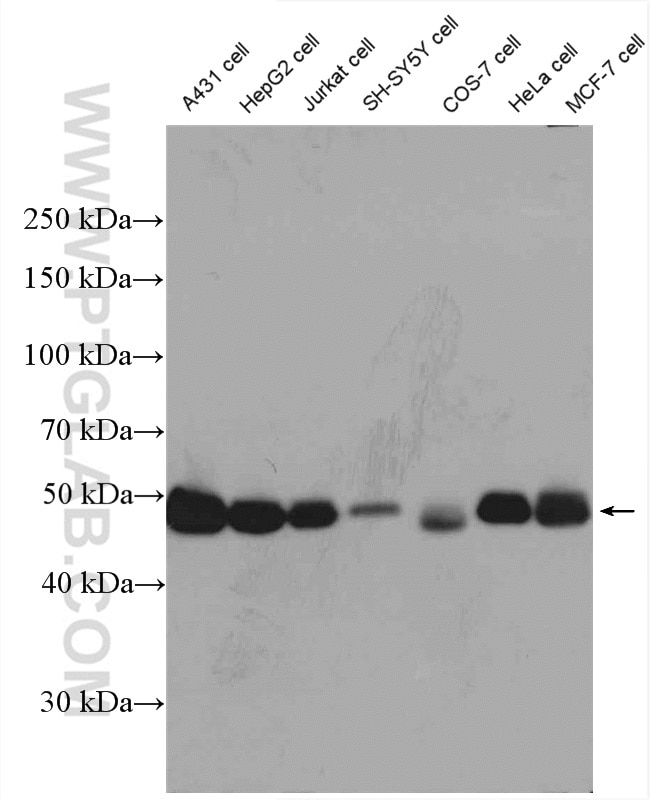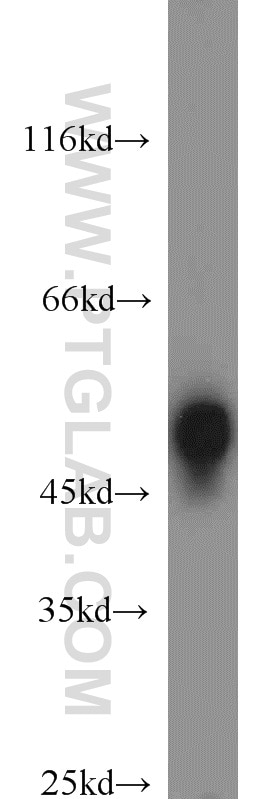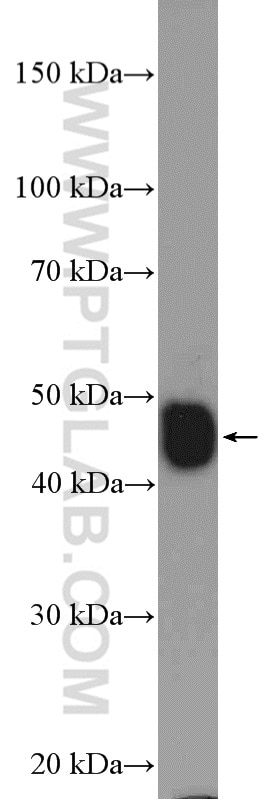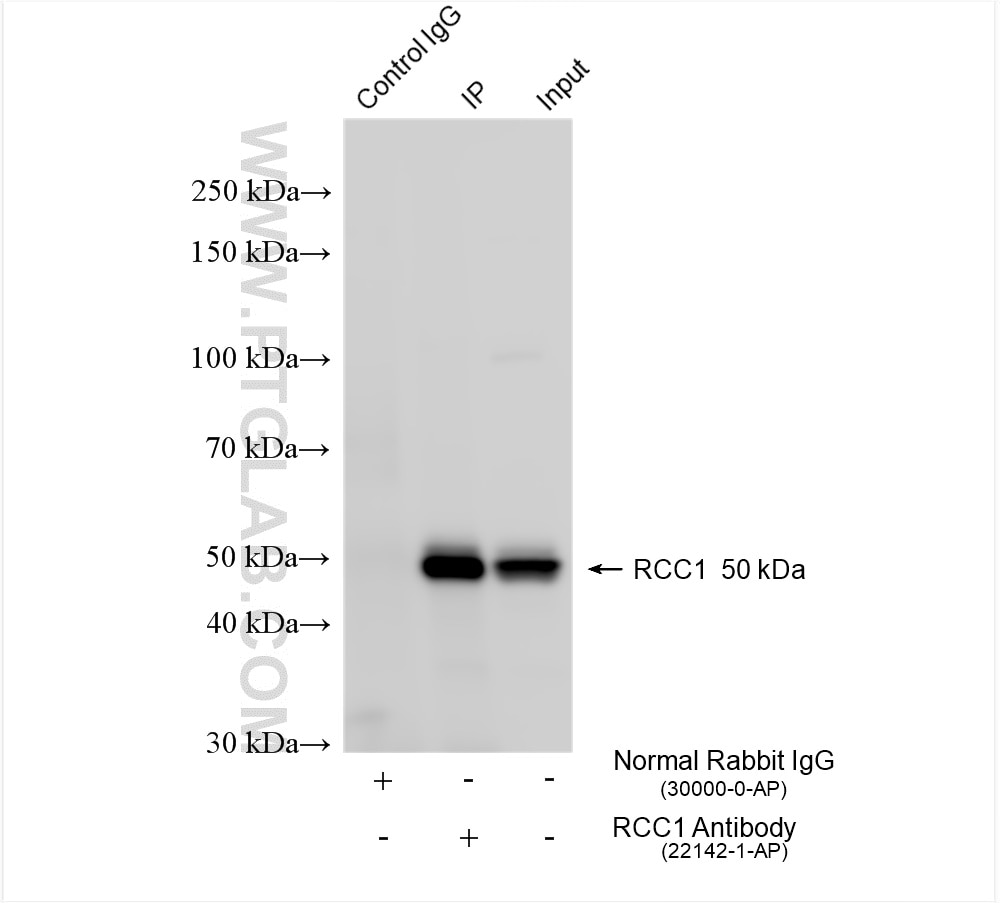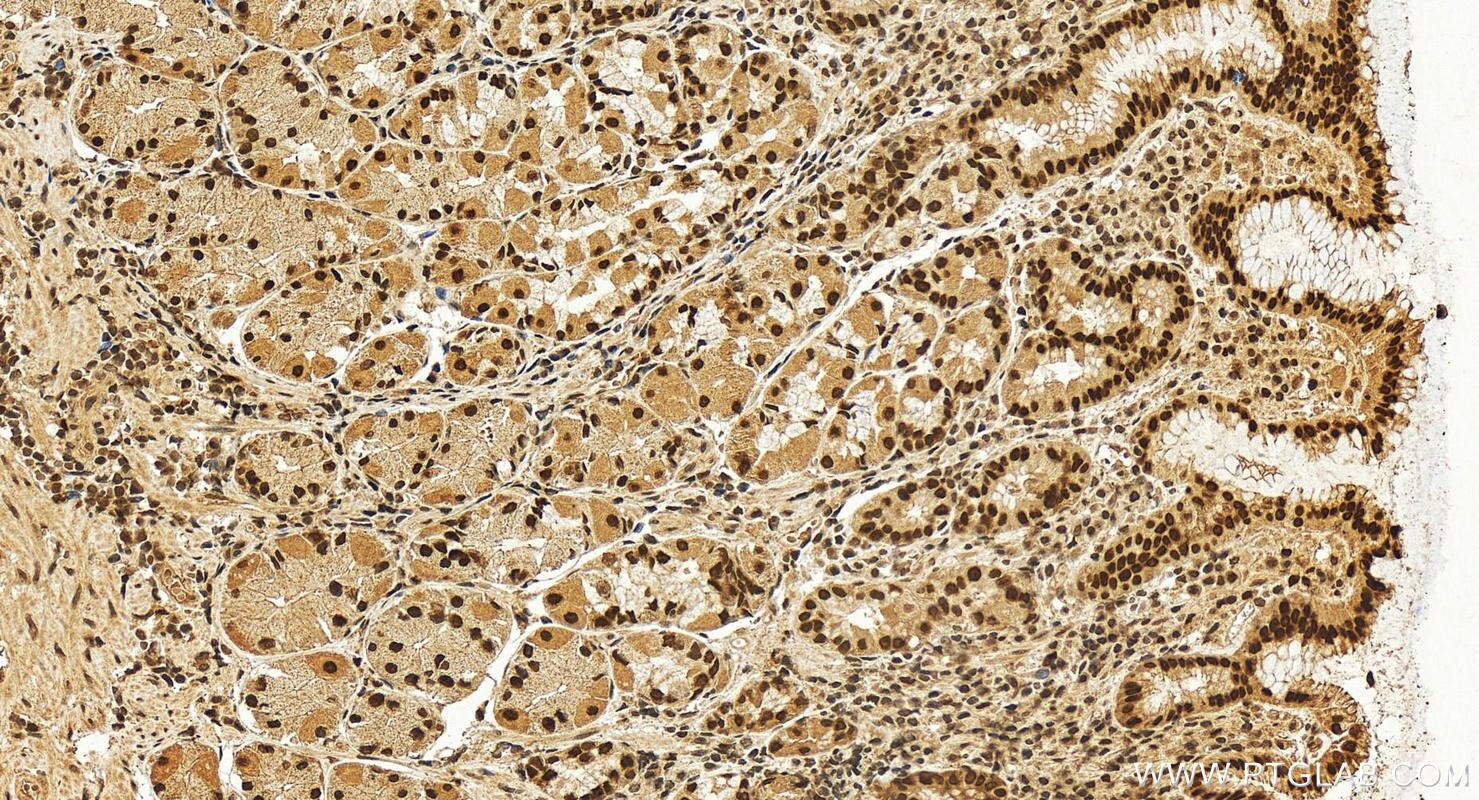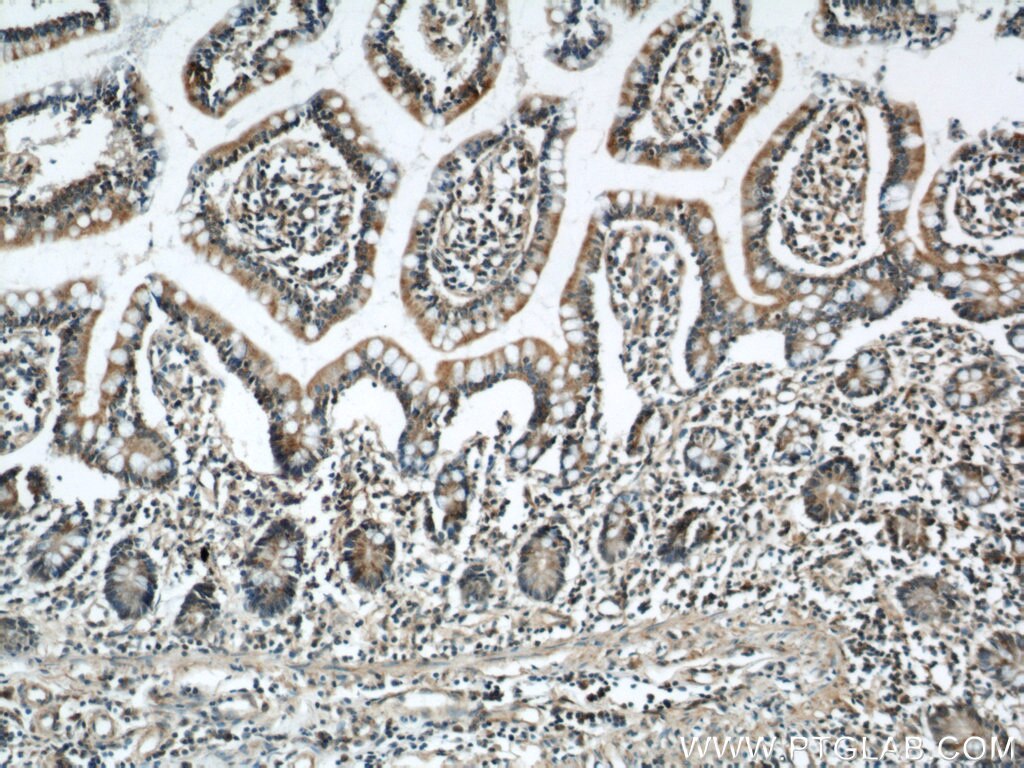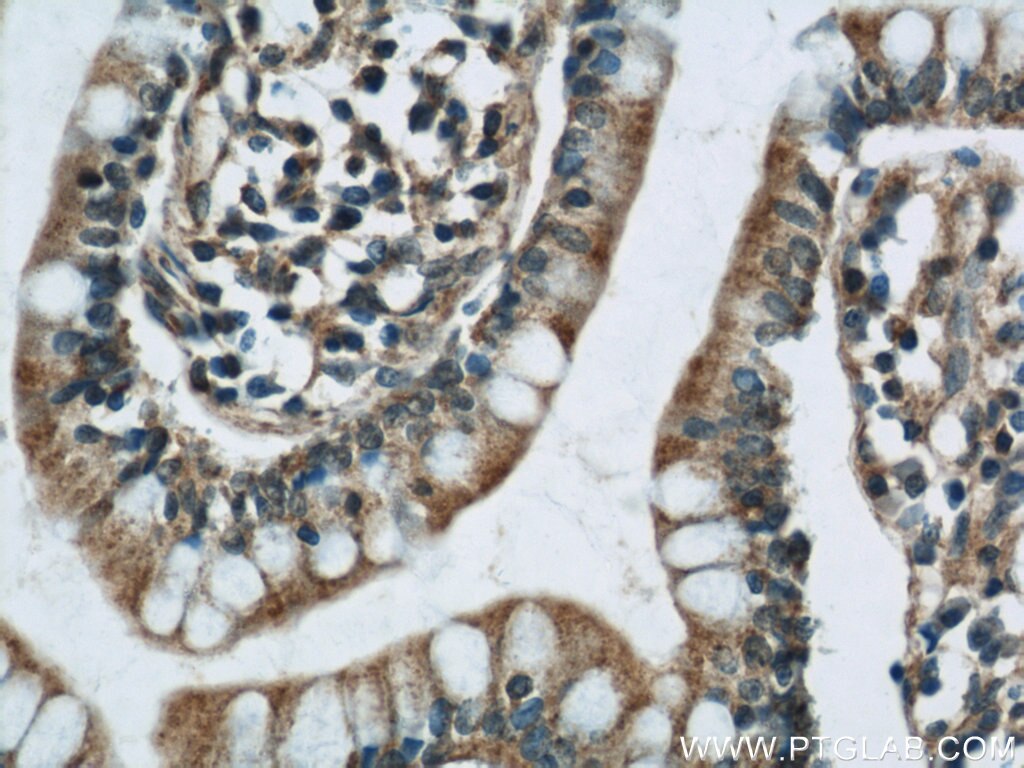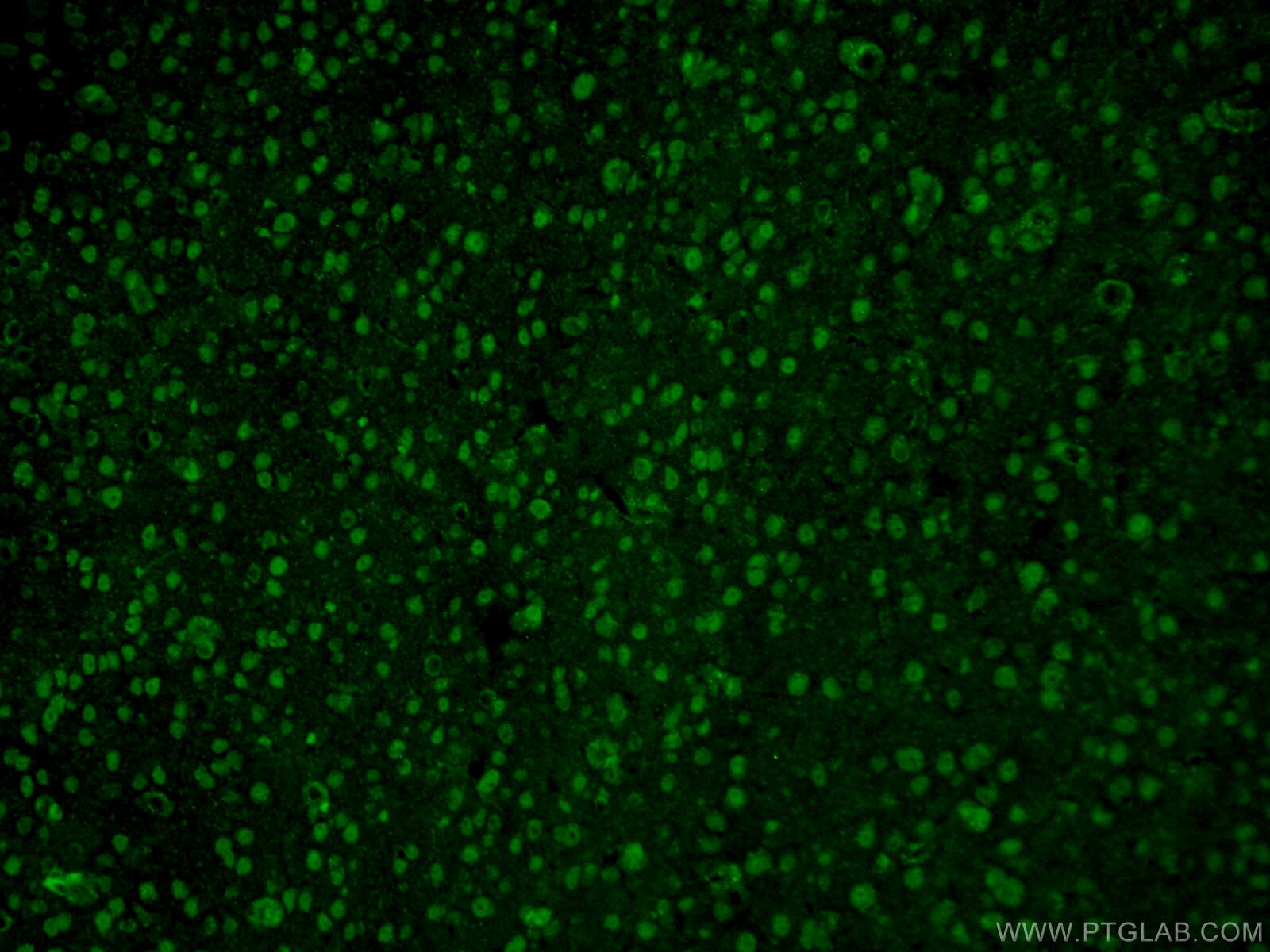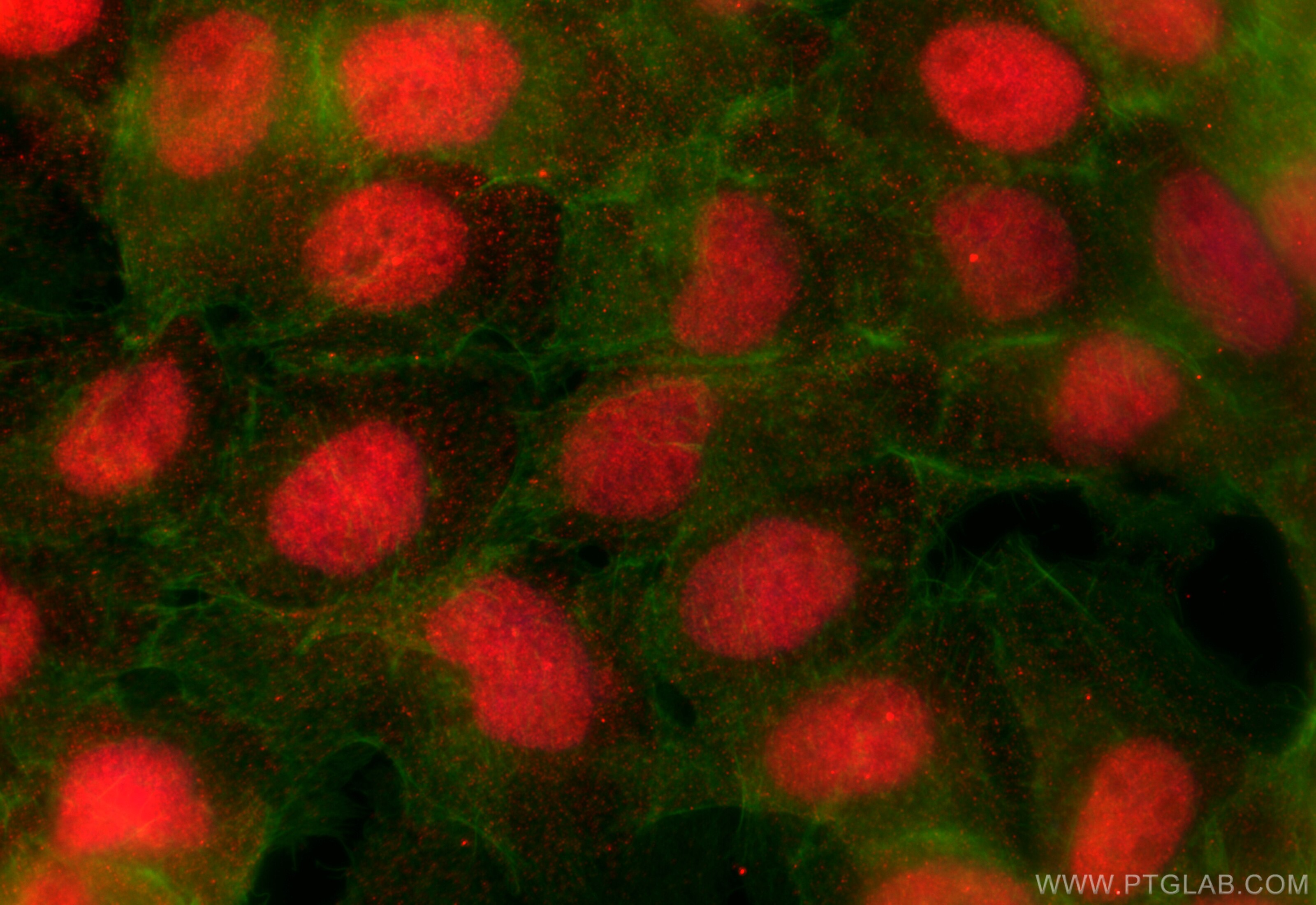Anticorps Polyclonal de lapin anti-RCC1
RCC1 Polyclonal Antibody for WB, IHC, IF/ICC, IP, ELISA
Hôte / Isotype
Lapin / IgG
Réactivité testée
Humain, singe, souris
Applications
WB, IHC, IF/ICC, IP, ELISA
Conjugaison
Non conjugué
N° de cat : 22142-1-AP
Synonymes
Galerie de données de validation
Applications testées
| Résultats positifs en WB | cellules A431, cellules COS-7, cellules HEK-293, cellules HeLa, cellules HepG2, cellules Jurkat, cellules MCF-7, cellules NIH/3T3, cellules SH-SY5Y |
| Résultats positifs en IP | cellules HEK-293, |
| Résultats positifs en IHC | tissu d'estomac humain, tissu d'intestin grêle humain il est suggéré de démasquer l'antigène avec un tampon de TE buffer pH 9.0; (*) À défaut, 'le démasquage de l'antigène peut être 'effectué avec un tampon citrate pH 6,0. |
| Résultats positifs en IF/ICC | cellules A431, |
Dilution recommandée
| Application | Dilution |
|---|---|
| Western Blot (WB) | WB : 1:1000-1:4000 |
| Immunoprécipitation (IP) | IP : 0.5-4.0 ug for 1.0-3.0 mg of total protein lysate |
| Immunohistochimie (IHC) | IHC : 1:500-1:2000 |
| Immunofluorescence (IF)/ICC | IF/ICC : 1:750-1:3000 |
| It is recommended that this reagent should be titrated in each testing system to obtain optimal results. | |
| Sample-dependent, check data in validation data gallery | |
Applications publiées
| WB | See 6 publications below |
| IHC | See 1 publications below |
| IF | See 1 publications below |
Informations sur le produit
22142-1-AP cible RCC1 dans les applications de WB, IHC, IF/ICC, IP, ELISA et montre une réactivité avec des échantillons Humain, singe, souris
| Réactivité | Humain, singe, souris |
| Réactivité citée | Humain, souris |
| Hôte / Isotype | Lapin / IgG |
| Clonalité | Polyclonal |
| Type | Anticorps |
| Immunogène | RCC1 Protéine recombinante Ag17569 |
| Nom complet | regulator of chromosome condensation 1 |
| Masse moléculaire calculée | 421 aa, 45 kDa |
| Poids moléculaire observé | 45-50 kDa |
| Numéro d’acquisition GenBank | BC010067 |
| Symbole du gène | RCC1 |
| Identification du gène (NCBI) | 1104 |
| Conjugaison | Non conjugué |
| Forme | Liquide |
| Méthode de purification | Purification par affinité contre l'antigène |
| Tampon de stockage | PBS with 0.02% sodium azide and 50% glycerol |
| Conditions de stockage | Stocker à -20°C. Stable pendant un an après l'expédition. L'aliquotage n'est pas nécessaire pour le stockage à -20oC Les 20ul contiennent 0,1% de BSA. |
Informations générales
CHC1, also named as RCC1, promotes the exchange of ran-bound gdp by gtp. It is involved in the regulation of onset of chromosome condensation in the S-phase. Phosphorylation of RCC1 on serines located in or near its nuclear localization signal activates RCC1 to generate RanGTP on mitotic chromosomes, which is required for spindle assembly and chromosome segregation. This antibody is a rabbit polyclonal antibody raised against residues near the C terminus of human RCC1.
Protocole
| Product Specific Protocols | |
|---|---|
| WB protocol for RCC1 antibody 22142-1-AP | Download protocol |
| IHC protocol for RCC1 antibody 22142-1-AP | Download protocol |
| IF protocol for RCC1 antibody 22142-1-AP | Download protocol |
| IP protocol for RCC1 antibody 22142-1-AP | Download protocol |
| Standard Protocols | |
|---|---|
| Click here to view our Standard Protocols |
Publications
| Species | Application | Title |
|---|---|---|
Curr Biol Differences in Mitotic Spindle Architecture in Mammalian Neural Stem Cells Influence Mitotic Accuracy during Brain Development. | ||
Biomaterials Combination antitumor immunotherapy with VEGF and PIGF siRNA via systemic delivery of multi-functionalized nanoparticles to tumor-associated macrophages and breast cancer cells. | ||
J Med Chem Selective Peptidomimetic Inhibitors of NTMT1/2: Rational Design, Synthesis, Characterization, and Crystallographic Studies. | ||
Cell Death Dis Regulator of chromatin condensation 1 abrogates the G1 cell cycle checkpoint via Cdk1 in human papillomavirus E7-expressing epithelium and cervical cancer cells. | ||
J Cell Mol Med SNORA73B promotes endometrial cancer progression through targeting MIB1 and regulating host gene RCC1 alternative splicing |
